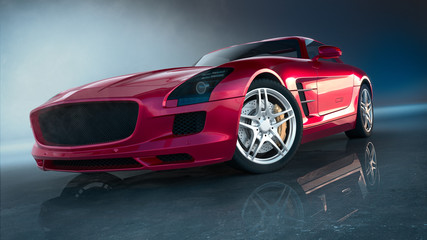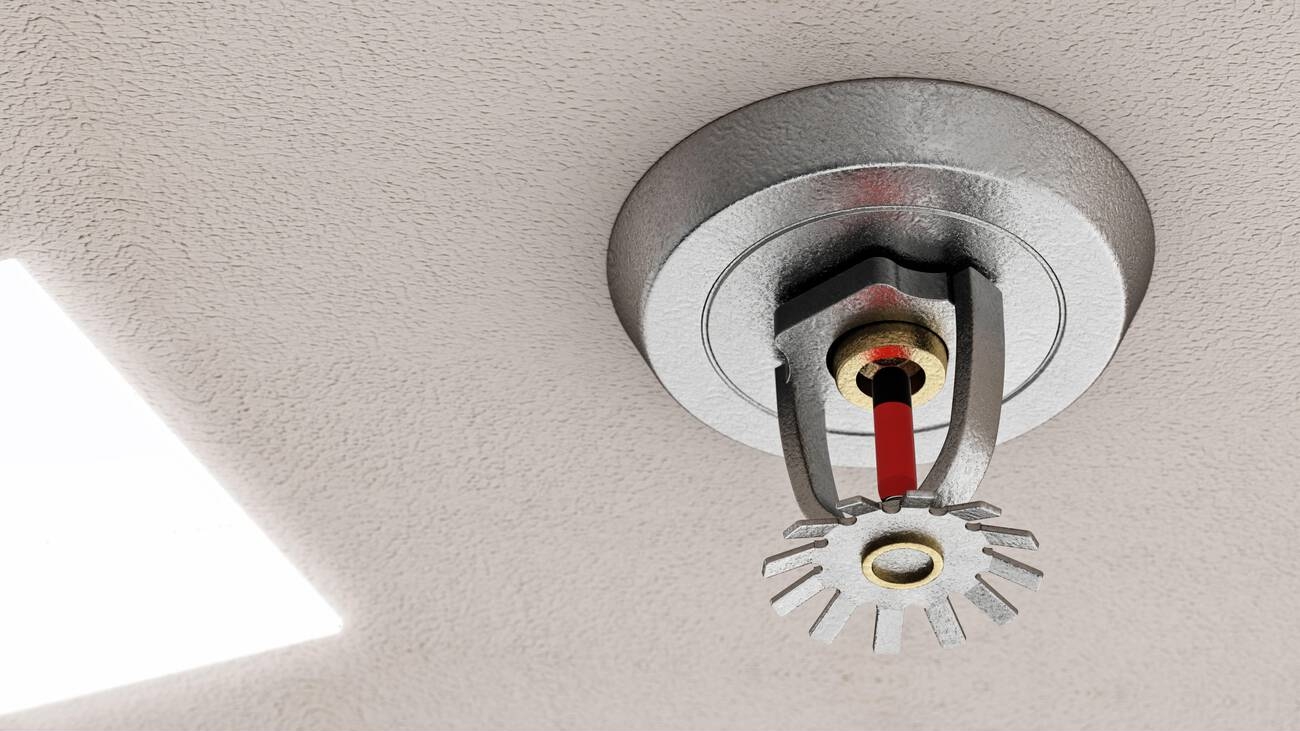Get ready to be amazed by the exciting uses of 3D printing in the car industry in 2021. Imagine customizable car seats, vehicles tailored to your preferences, and personalized designs effortlessly incorporated. 3D printing not only enhances customer satisfaction and brand loyalty but also revolutionizes manufacturing by optimizing components, reducing costs, and speeding up production.
Ford uses it for prototyping high-performance parts, while Volkswagen saves money with 3D-printed tools. Join us on this journey as we unveil the exciting uses of 3D printing in the car industry in 2021.
Customizable Seats With 3D Printing
Customizable seats are revolutionizing the car industry with the help of 3D printing. This innovative technology allows car manufacturers to create seats that can be tailored to meet the unique needs and preferences of each individual. With 3D printing in car manufacturing, seats can be designed and produced with precision, ensuring a perfect fit for every driver and passenger.
Automotive 3D printing offers endless possibilities for customization. Seats can be personalized in terms of firmness levels, providing optimal comfort and support. By using 3D printing for cars, manufacturers can easily incorporate features like adjustable lumbar support, heating and cooling elements, and even massage functions. These customized seats enhance the overall driving experience and contribute to customer satisfaction and brand loyalty.
The use of 3D printing in car manufacturing also brings significant benefits in terms of production efficiency. Traditional methods of seat production often require complex molds and tooling, which can be time-consuming and expensive. However, with 3D printing, seats can be created directly from digital designs, eliminating the need for molds and reducing production time and cost.
In addition to customization and efficiency, 3D printing for cars also allows for the production of lightweight and durable seats. By utilizing advanced materials and design optimization techniques, manufacturers can create seats that are both strong and lightweight, improving fuel efficiency and vehicle performance.
Automotive Brackets and Components
To continue exploring the exciting uses of 3D printing in the car industry, let’s delve into the realm of automotive brackets and components. This innovative technology has revolutionized the way these crucial parts are manufactured, offering numerous benefits to car manufacturers and consumers alike. Here are some key points to consider:
– Optimized Brackets: With the use of 3D printing, automotive brackets can be optimized for strength, weight reduction, and overall performance. This results in improved efficiency and durability of vehicles.
– Rolls Royce’s Showcase: Rolls Royce recently showcased 3D-printed brackets that were optimized using Design for Additive Manufacturing (DfAM) techniques. This demonstrates the immense potential of 3D printing in producing high-quality brackets.
– Cost Savings and Faster Production: 3D printing automotive brackets and components can lead to significant cost savings and faster production times compared to traditional manufacturing methods. This is particularly beneficial for car companies aiming to streamline their production processes.
– Unique Features: Digital manufacturing allows for the incorporation of unique features such as brand names and QR codes directly into the brackets and components. This not only enhances branding but also provides additional functionality and traceability.
– Reduced Production Cost and Time: By utilizing 3D printing for automotive brackets and components, car manufacturers can significantly reduce production costs and time. This allows for more efficient and cost-effective manufacturing processes.
The use of 3D printing in the production of automotive brackets and components offers numerous advantages, including optimized designs, cost savings, unique features, and reduced production time. As this technology continues to advance, we can expect further improvements in the quality and performance of these essential car parts.
Prototyping and Testing High-Performance Parts
Now let’s dive into prototyping and testing high-performance parts using 3D printing, where you can explore the potential of this technology to revolutionize the development and evaluation process of these crucial components. 3D printing has emerged as a game-changer in the automotive industry, offering the ability to quickly and cost-effectively create prototypes of high-performance parts. With a 3D printer, you can bring your designs to life in a matter of hours or days, allowing for faster iteration and refinement. This technology enables engineers to test the functionality, fit, and performance of these parts before committing to expensive traditional manufacturing processes. Can you 3D print a car? While printing an entire car may not be feasible at the moment, individual high-performance parts, such as engine components, suspension parts, and aerodynamic elements, can be successfully printed using advanced materials like carbon fiber-reinforced polymers. With 3D printing, the possibilities for creating lightweight, optimized, and durable high-performance parts are virtually limitless. As the automotive industry continues to embrace additive manufacturing, we can expect to see even more advancements in prototyping and testing high-performance parts using 3D printing.
Manufacturing Tools With 3D Printing
One key use of 3D printing in the car industry is the production of manufacturing tools. With 3D printing technology, car manufacturers can create custom tools that are specifically designed for their production processes. Here are some key points about the use of 3D printing in manufacturing tools:
– Customization: 3D printing allows for the creation of highly customized tools, tailored to the specific needs of the manufacturing process. This enables car manufacturers to optimize their production and improve efficiency.
– Cost savings: By 3D printing manufacturing tools, car manufacturers can significantly reduce production costs. Traditional methods of tooling can be expensive, but with 3D printing, the cost is greatly reduced.
– Time savings: 3D printing enables the rapid production of tools, reducing lead times from weeks to days. This allows car manufacturers to speed up their production processes and meet tight deadlines.
– Improved functionality: 3D printing allows for the incorporation of complex designs and features in manufacturing tools. This can enhance the functionality and performance of the tools, leading to improved production outcomes.
– Enhanced efficiency: By using 3D-printed manufacturing tools, car manufacturers can streamline their production processes and improve overall efficiency. This can result in higher productivity and reduced waste.
Enhanced Security With 3d-Printed Lug Nuts
Enhancing security in the car industry, 3D printing offers the creation of custom locking wheel lug nuts. These lug nuts are designed to provide improved security and prevent car wheel theft. With 3D printing, the flexibility in design and production allows for the customization of lug nuts to fit specific vehicles.
Traditional lug nuts can be easily removed with common tools, making vehicles vulnerable to theft. However, 3D-printed lug nuts are more resistant to theft due to their unique design and customized fit. The custom locking mechanism ensures that only the owner has the specific tool required to remove the lug nuts, providing an extra layer of security.
By utilizing 3D printing technology, car manufacturers can enhance the security features of their vehicles and protect them from theft. Custom locking wheel lug nuts offer peace of mind to car owners, knowing that their wheels are securely fastened and less susceptible to unauthorized removal.
In addition to enhanced security, 3D-printed lug nuts also provide the benefits of design flexibility and efficient production. With 3D printing, manufacturers can easily create complex and intricate designs that are not possible with traditional manufacturing methods. This allows for the production of lug nuts that are not only secure but also aesthetically pleasing.
3D Printing in the Motorsports Industry
3D printing plays a significant role in the motorsports industry, revolutionizing various applications and contributing to enhanced performance and competitiveness. Here are five exciting uses of 3D printing in the motorsports industry:
– Rapid prototyping: 3D printing allows for quick design iterations, enabling teams to test and refine their designs more efficiently. This accelerates the development process and helps teams stay ahead of the competition.
– Lightweight and high-performance parts: With 3D printing, motorsports teams can create complex, lightweight parts that are tailored to their specific needs. This not only improves aerodynamics but also enhances overall vehicle performance on the track.
– Customization and personalization: 3D printing enables teams to create customized components that fit their specific requirements. Whether it’s a unique aerodynamic feature or a personalized interior, 3D printing allows for greater flexibility in design and customization.
– Improved aerodynamics: 3D printing allows for the creation of intricate and optimized shapes that enhance airflow and reduce drag. This gives motorsports teams a competitive edge by improving the overall aerodynamic performance of their vehicles.
– Cost and time savings: 3D printing offers cost and time savings in the production of motorsports components. By eliminating the need for traditional manufacturing processes and reducing material waste, teams can reduce production costs and lead times, allowing them to be more efficient and competitive.
Spare Parts and Repairs for Classic Cars
If you own a classic car, you can now easily find and replace hard-to-find or obsolete parts using 3D printing technology. This innovative solution allows you to preserve the heritage and value of your vintage automobile while improving its reliability and functionality. 3D printing overcomes the challenges of sourcing discontinued components and reduces the costs and lead times associated with traditional manufacturing methods.
With 3D printing, you can recreate intricate and complex parts that may no longer be available through conventional channels. Whether it’s a rare emblem, a unique trim piece, or a mechanical component, 3D printing enables you to reproduce these elements with precision and accuracy. This technology also offers the flexibility to customize and optimize the design of the replacement part, ensuring a perfect fit and enhanced performance.
Moreover, 3D printing allows for the production of spare parts on demand, eliminating the need for large inventories and reducing the risk of parts becoming obsolete. This not only saves costs but also ensures the availability of essential components for your classic car. By embracing 3D printing for spare parts and repairs, you can extend the lifespan of your beloved vintage vehicle and continue to enjoy the timeless beauty and charm it embodies.
Future Vehicle Production With 3D Printing
As you look ahead to the future of vehicle production, it becomes evident that 3D printing will play an increasingly significant role in revolutionizing the car industry. Here are some key points to consider:
– Faster and more flexible manufacturing: 3D printing allows for the creation of complex vehicle components in a fraction of the time compared to traditional manufacturing methods. This increased efficiency can lead to faster production cycles and shorter lead times.
– Scalability challenges: While 3D printing offers great potential for vehicle production, there are still challenges to overcome when it comes to scalability. As the demand for 3D-printed vehicles grows, manufacturers will need to find ways to scale up production while maintaining quality and efficiency.
– Regulatory requirements: The use of 3D printing in vehicle production may require manufacturers to navigate new regulatory frameworks. Ensuring compliance with safety and performance standards will be crucial to the widespread adoption of 3D-printed cars.
– Continued research and development: The future of vehicle production with 3D printing relies on ongoing research and development efforts. Innovations in materials, printing techniques, and design optimization will drive the evolution of 3D-printed vehicles.
– Possibility of 3D-printed motorcycles: While the focus has largely been on cars, there is also potential for 3D printing to revolutionize motorcycle production. As the technology advances, we may see more manufacturers exploring the use of 3D printing in motorcycles.
3D printing has the potential to transform the way vehicles are manufactured. As the industry continues to embrace this technology, we can expect to see advancements in production speed, customization options, and overall design possibilities.
Light weighting and Performance Optimization
To optimize performance and reduce weight, utilize 3D printing in the car industry. Additive manufacturing techniques allow for the production of lightweight components with complex geometries and optimized structures. With 3D printing, automakers can explore the use of lightweight materials such as carbon fiber-reinforced polymers. By reducing weight, vehicles can improve fuel efficiency and overall dynamics, resulting in enhanced performance.
The potential of 3D printing in creating high-performance components is being actively explored by automakers. This technology offers design freedom and flexibility, enabling the production of innovative and optimized vehicle structures. Complex shapes and intricate details can be easily achieved through 3D printing, allowing for the creation of parts that are tailored to meet specific performance requirements.
Furthermore, 3D printing enables the customization of components for individual vehicles, which can further optimize performance. By tailoring parts to the unique needs and preferences of each vehicle, automakers can enhance overall performance and driving experience.
Sustainable Manufacturing Practices
To achieve sustainable manufacturing practices, utilize 3D printing in the car industry. With this innovative technology, you can revolutionize the way cars are manufactured, reducing waste and energy consumption while maintaining high-quality production. Here are five key ways 3D printing promotes sustainable manufacturing in the automotive sector:
– Material Efficiency: 3D printing allows for precise material usage, minimizing waste compared to traditional manufacturing processes. Only the necessary amount of material is used to create each part, reducing overall material consumption.
– Recycling and Reusability: Unused or defective 3D-printed parts can be easily recycled and reprinted, minimizing waste. This closed-loop approach contributes to a more sustainable manufacturing process.
– Energy Conservation: By utilizing additive manufacturing techniques, 3D printing significantly reduces energy consumption in the car manufacturing process. This helps to lower carbon emissions and promote a greener production approach.
– Reduced Transportation: With 3D printing, car manufacturers can produce components on-site or locally, reducing the need for long-distance transportation. This eliminates the carbon emissions associated with transportation and contributes to a more sustainable supply chain.
– Sustainable Materials: 3D printing allows for the use of sustainable materials, such as biodegradable polymers, in the manufacturing process. These materials can be recycled or have a lower environmental impact compared to traditional materials, further enhancing sustainability.
3d-Printed Vehicles in the Luxury Segment
Luxury car manufacturers have embraced the use of 3D printing to create vehicles with unparalleled customization and innovative design features. In the luxury segment, 3D-printed vehicles showcase the cutting-edge capabilities of additive manufacturing. For example, the Aston Martin DBR22 features a 3D-printed rear subframe with bonded aluminum parts, enhancing both strength and weight distribution. In the Porsche GT2RS, 3D-printed pistons are 10% lighter and incorporate cooling channels, improving performance and efficiency.
The Cadillac Celestiq boasts over 100 3D-printed parts made of polymer and metal, showcasing the versatility of additive manufacturing. Ducati sports bikes also incorporate 3D-printed polymer-based components, optimizing both aesthetics and functionality. By leveraging 3D printing technology, luxury car manufacturers can offer customers an unprecedented level of personalization and exclusivity. From unique interior designs to bespoke exterior elements, 3D printing enables the realization of intricate and customized features. With the use of advanced materials and additive manufacturing techniques, luxury car manufacturers are pushing the boundaries of design and performance, setting new standards in the automotive industry.
Frequently Asked Questions
How Does 3D Printing Contribute to the Customization of Seats in Cars?
3D printing allows for the customization of car seats by Porsche. You can choose the firmness levels of the seats, resulting in a personalized and comfortable driving experience that caters to your individual preferences and needs.
What Are the Key Benefits of Using 3D Printing for Automotive Brackets and Components?
The key benefits of using 3D printing for automotive brackets and components include cost savings, faster production, and design optimization. With 3D printing, brackets can be optimized and customized, resulting in reduced production time and improved efficiency.
How Does Ford Utilize 3D Printing for Prototyping and Testing High-Performance Car Parts?
Ford utilizes 3D printing for prototyping and testing high-performance car parts. It allows them to quickly iterate designs, test aerodynamics, and ensure performance standards. Additive manufacturing is seen as the future of production.
What Cost and Time Savings Are Achieved by Volkswagen Through the Use of 3d-Printed Tooling?
Volkswagen achieves significant cost and time savings through the use of 3D-printed tooling. Production costs are reduced by 90% and lead times are cut from weeks to days, resulting in nearly €325,000 saved in 2017.
How Does 3D Printing Enhance Security in the Automotive Industry, Specifically With Custom Locking Wheel Lug Nuts?
3D printing enhances security in the automotive industry by providing custom locking wheel lug nuts. These nuts are more resistant to theft, offering improved security. With 3D printing, flexibility in design and production is possible.
Conclusion
In conclusion, the utilization of 3D printing in the car industry in 2021 has brought about groundbreaking advancements and exciting possibilities. From customizable seats and enhanced security to prototyping high-performance parts and even the potential for 3D-printed luxury vehicles, the future looks promising. Not only does this technology enhance customer satisfaction and brand loyalty, but it also optimizes manufacturing processes, reduces costs, and accelerates production. With 3D printing, the automotive world is experiencing a revolution that is shaping the way cars are designed, manufactured, and enjoyed.



